Natural/Spoken Language Understanding
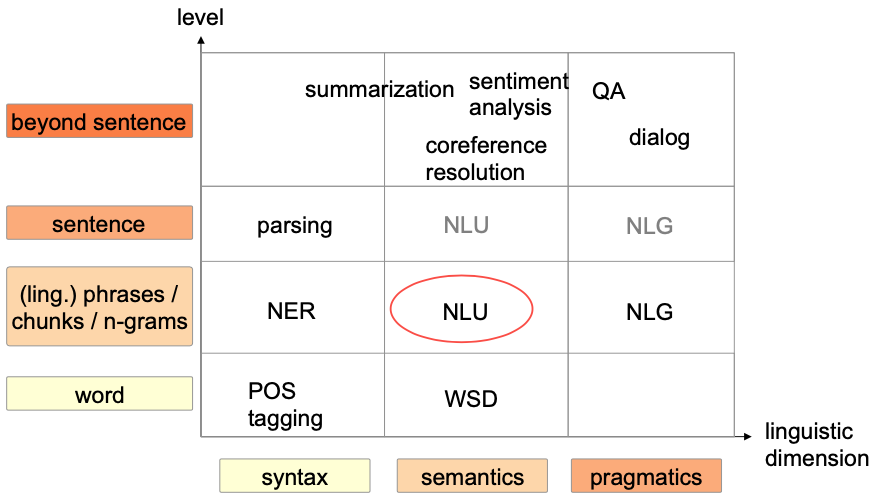
Definition
Natural language understanding
- Representing the semantics of natural language
- Possible view: Translation from natural language to representation of meaning
Difficulties
- Ambiguities
Lexical
Syntax
Referential
- Vagueness
- E.g., “I had a late lunch.”
- Dimensons
- Depth: Shallow vs Deep
- Domain: Narrow vs Open
Examples
Siri (2011)
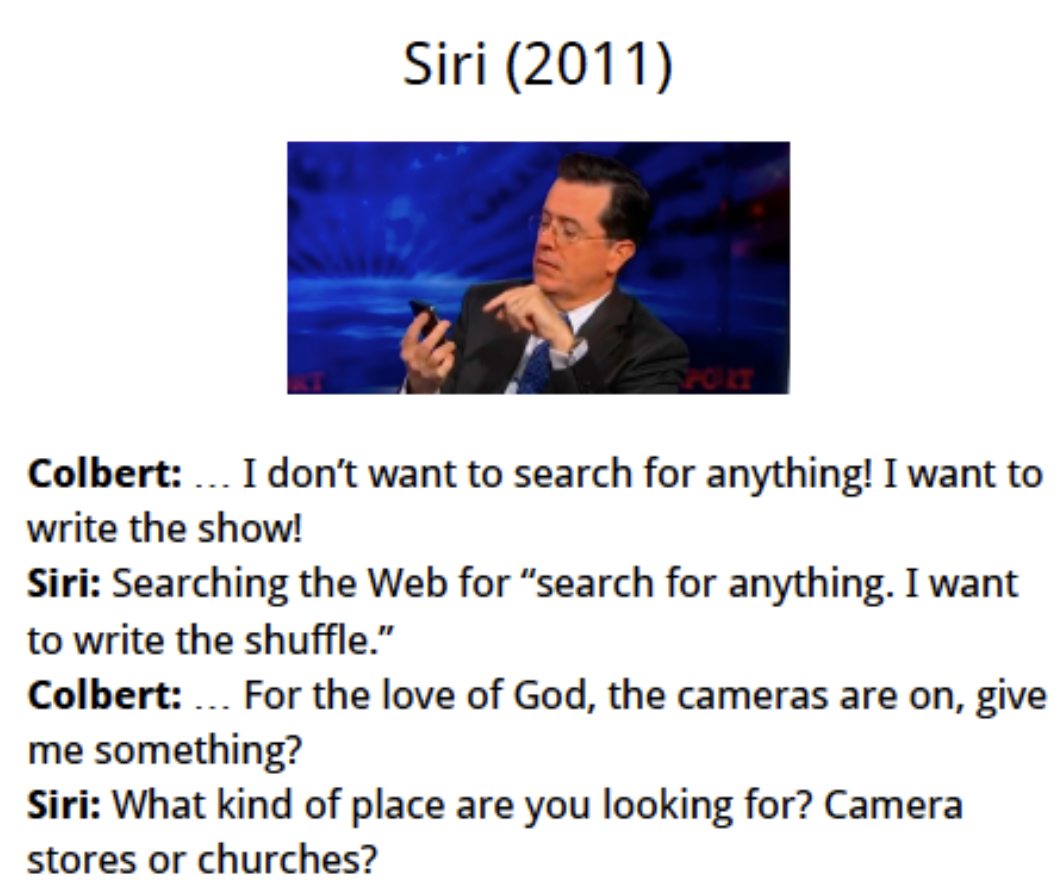
Dialog Modeling
Dialog system / Conversational agent
Computer system that converse with a human
Coherent structure
Different modalities:
- Text, speech, graphics, haptics, gestures
Components

Input recognition
Different modalities
- Automatic speech recognition (ASR)
- Gesture recognition
Transformation
Input modality (e.g. speech) –> text
May introduce first errors
High influence on the performance of an dialog system
Natural language understanding (NLU)
Semantic interpretation of written text
Transformation from natural language to semantic representation
Representations:
Deep vs Shallow
Domain-dependent vs. domain independent
Dialog manager (DM)
- Manage flow of conversation
- Input: Semantic representation of the input
- Output: Semantic representation of the output
- Utilize additional knowledge
User information
Dialog History
Task-specific information
Natural language generation (NLG)
Generate natural language from semantic representation
- Input: Semantic output representation of the dialog manager
- Output: Natural language text for the user
Output rendering
Generate correct output
- e.g. Text-to-Speech (TTS) for Spoken Dialog Systems
Natural Language understanding
Approaches
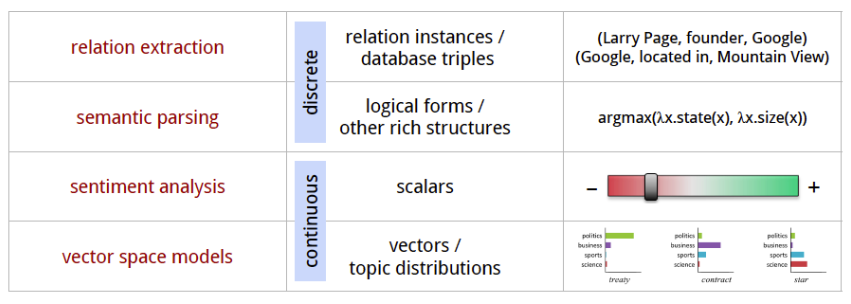
Output representation
- Relation instances
- (Larry Page, founder, Google)
- Logical forms
- Love(Mary, John)
- Scalar
- Positive/Negative 0.9
- Vector
- Hidden representation/ Word embeddings
Algorithms
- Rule-based / Template
- Machine learning
- Conditional random fields
- Support Vector Machine
- Neural Networks / Deep learning
Semantic Parsing
Parse natural language sentence into semantic representation
Machine learning approaches most successful 👏
Most common approach:
- Shallow Semantic Parsing / Semantic Role Labeling
Most important resources:
PropBank
Proposition Bank (PropBank)
Labels for all sentence in the English Penn TreeBank
Defines semantic based on the verbs of the sentence
Verbs: Define different senses of the verbs
Sense: Number of Arguments important to this sense (Often only numbers)
Arg0: Proto-Agent
Arg1: Proto-Patient
Arg2: mostly benefactive, instrument, attribute, or end state
Arg3: start point, benefactive, instrument, or attribute
Example: “agree”
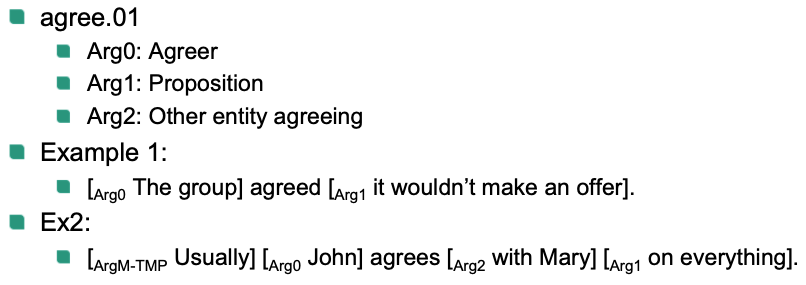
Example: “fall”
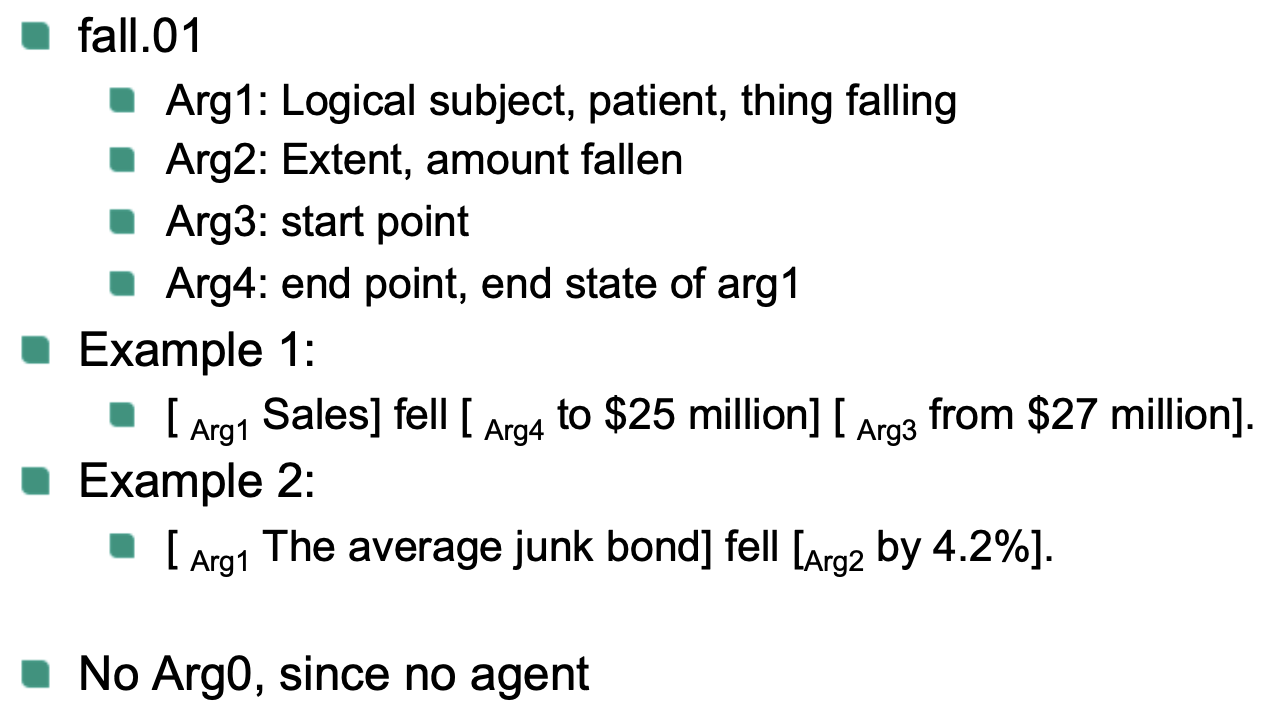
PropBank ArgM
TMP: when? yesterday evening, nowLOC: where? at the museum, in San FranciscoDIR: where to/from? down, to BangkokMNR: how? clearly, with much enthusiasmPRP/CAU: why? because … , in response to the rulingREC: themselves, each otherADV: miscellaneousPRD: secondary predication …ate the meat raw
🔴 Problem
Different words, Predicate expressed by noun
Example

FrameNet
- Roles based on Frames
- Frame: holistic background knowledge that unites these words
- Frame-elements: Frame-specific semantic roles
Example 1

Example 2
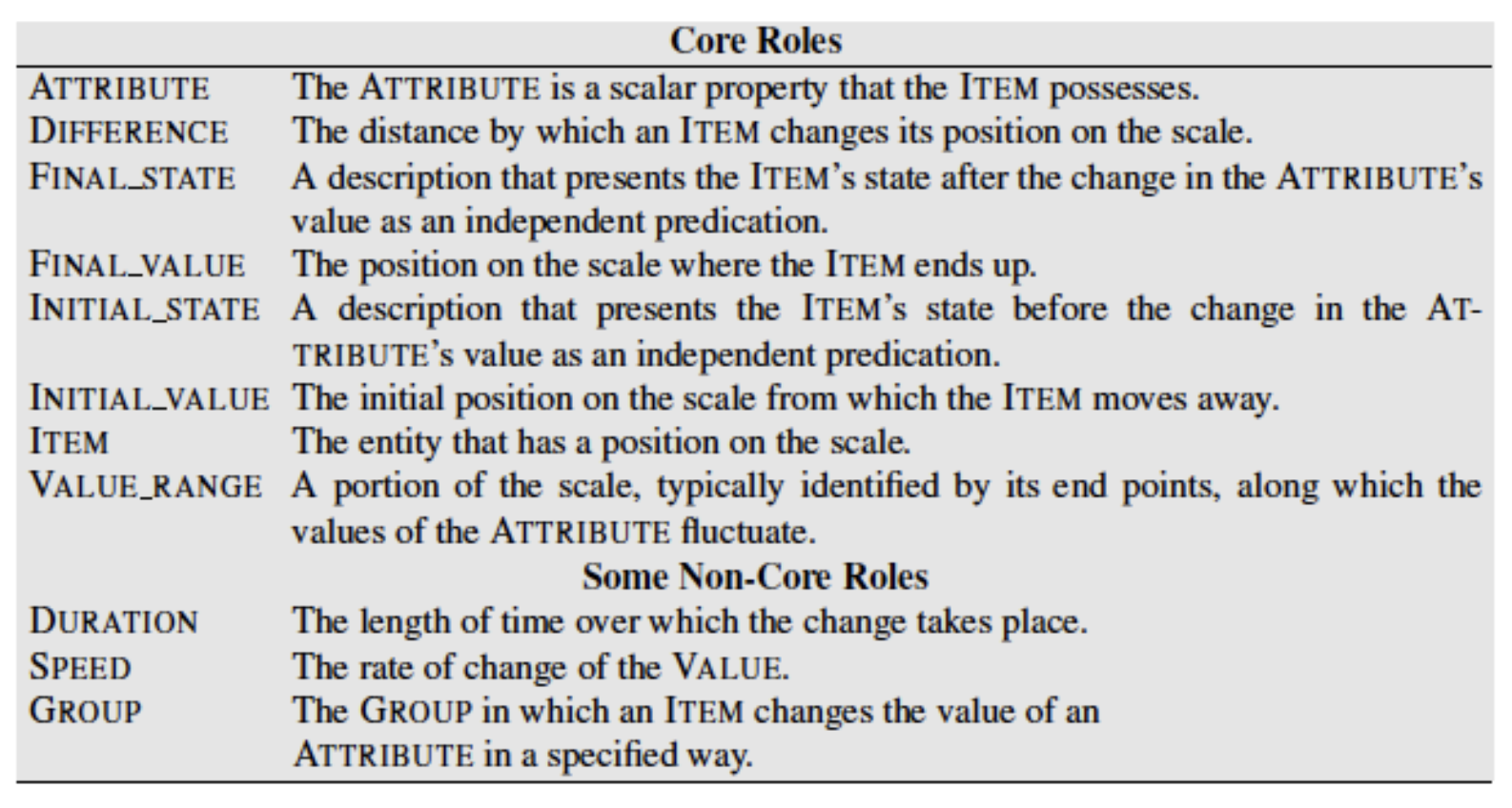
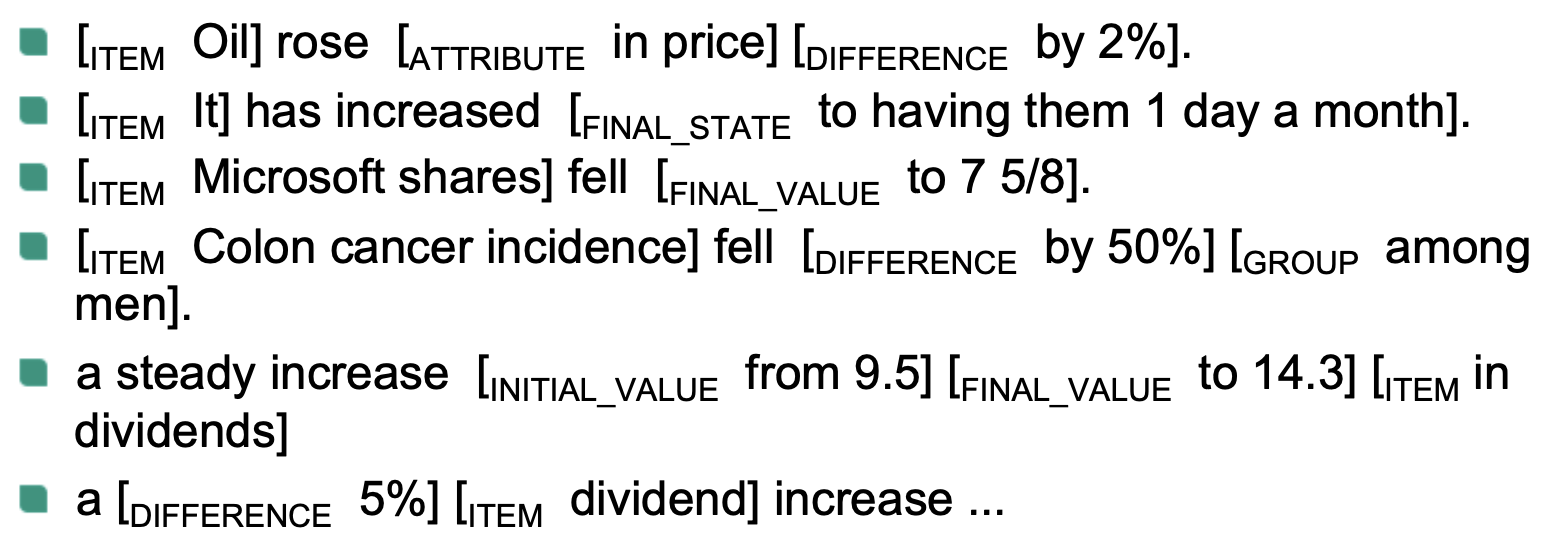
Semantic Role labeling
Task: Automatically finding semantic roles for each argument of each predicate
Approach: Maching Learning
High level algorithm:
Parse sentence (Syntax tree)
Find Predicates
For every node in tree: Decide semantic role
Spoken Language understanding
Natural language processing for spoken input
Difficulties
Less grammatically speech
Partial Sentences
Disfluencies (Self correction, hesitations, repetitions)
Robust to noise
ASR errors
Techniques:
- Confidence
- Multiple hypothesis
No Structure information
Punctuation
Text segmentation
Approach
- Transform text into task-specific semantic representation of the user’s intention
- Subtasks
Domain Detection
- Motivated by Call Centers
- Many agents with specialization on one topic (Billing inquiries, technical support requests, sales inquiries, etc.)
- First techniques: Menus to find appropriate agent
- Automatic task:
- Given the utterance find the correct agent Utterance classification task
- Utterance classification task
- Input: Utterance
- Output: Topic
Intention determination
- Domain-dependent utterance classes
- e.g. Find_Flight
- Task: Assign class to Utterance
- Use similar technique
Slot filling
Sequence labeling task: Assign semantic class label to every word and history
- History: previous words and labels
Example:

Success of deep learning in other approaches:
- RNN-based approach
- Find most probable label given word and history